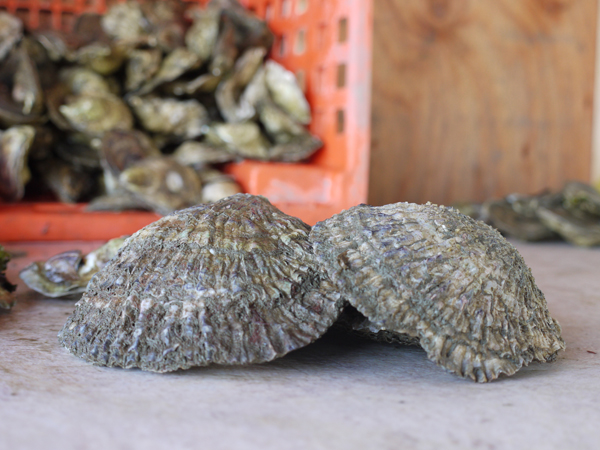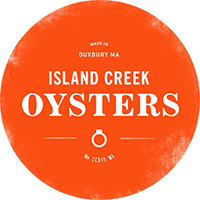Almost all traditional French food is unbelievably good (my blog entry, my rules) and their seafood is no exception to this elemental truth. Coupled with the terrain and culture, French seafood (next to that of New England) is probably the most evocative in the world. John Baxter, author of Immoveable Feast: A Paris Christmas, conveys it verbosely, but nicely: “Something in the seasonality of seafood, its essentiality of freshness, demands our instant attention. The translucency of an oyster’s flesh, the gleam of a fish’s eye and the sheen of its skin are imperatives that transcend the banality of existence, imposing a duty of relish which we, as creatures of the sea ourselves, who still weep and sweat salt, ignore at our peril.” (Wow!) Incidentally, often placed at the top of this gastronomic podium is the oyster.
French oyster culture, like our own, mirrors their wine culture. Not only do the French produce the most wine of any country from some of the oldest vineyards in the world, they also have a highly evolved culture that provides a framework by which it should be produced, distributed, and enjoyed. This framework, while useful once learned, can be confusing and even daunting. All of this holds true for oysters as well.
The French have been eating and cultivating oysters since Roman times. If you find navigating an American raw bar menu difficult, a Gallic oyster list will have you in a cold sweat. Like wine, the oysters are broken down into crus. For instance, huîtres fines de claire are oysters finished in small salt ponds for at least a month at a density of twenty oysters per square meter; huîtres spéciales de claire are finished in said salt ponds for at least two months at a density of ten oysters per square meter; and huîtres spéciales pousse en claire are finished for at least four months at a density between only five and ten oysters per square meter. All these as opposed to just plain huîtres fines named for a somewhat louche rating (between 6.5 and 10.5) based on the weight of the meat and liquor contained within their shells. Within these crus there are also various sizes (n° 0-5). And you thought telling a premier cru Bordeaux from a premier grand cru classé A Saint-Emilion was tough. Pssh. The country is not only one of the world’s largest oyster producers, but it consumes a whopping 95% of that production domestically. You won’t catch the French letting too many of their precious huîtres leftovers slip far away from home either—the remaining 5% is generally consumed in Belgium, Germany, and Switzerland.
The French harvest two species–the native Ostrea edulis (known colloquially as Belons, Gravettes, or Les Plates in France and European Flats here in North America) and Crassostrea gigas (called creuses for their deep cups in France, Pacifics here). In the nineteenth century Belon populations, while being heavily exploited, were also devastated by a parasite known as Bonamia. A new species was introduced, rather unintentionally, from Portugal in 1868 which was subsequently decimated by another microorganism and totally erased from the French coast by the 1970’s. Japanese oysters were introduced in 1971 and have come to dominate production (though now too are being ravaged by, of all things, herpes). Belons still persist in certain growing locations, but are by far the hardest to cultivate, most cherished and thus most expensive oyster on the market at any time of year. Merci bien supply and demand.
We noted earlier the French’s staggering oyster consumption figures. Perhaps even more staggering, though, is the fact that between 50% and 70% of all those oysters each year are consumed around the Christmas and New Years holiday. This makes even our late November turkey fetish look like a hobby. And Belons, which we are thrilled to make available for your own Christmas repast, are truly a classic French Christmas oyster. In France, oysters are as essential to Christmas as fireworks are to the Fourth of July.
And so they should be. Oysters really are the perfect Christmas food; December oysters are like September tomatoes–they are ripe! They have just now ceased to pump water, having stored up the maximum amount of glycogen for their long winter’s hibernation making them sweeter and crisper than at any other point in the year. They are also a great way to offset all of the other rich food that is thrown at us throughout the Christmas season. After two weeks of roast beef, pork tenderloin and potatoes au gratin paired with big red wines and egg nog, its generally hard (for this bon vivant anyway) to stomach a Christmas ham. What better way to freshen things up than with a glass of dry muscadet and a dozen oysters whether they are the transplanted Belons or our native Island Creeks?
When it comes to gastronomy we at Island Creek do not compromise, particularly in the name of geopolitics, and this blogger tends to defer to the French in such matters. So, here’s to a francophile Christmas. Joyeux Noël!



Leave a Reply